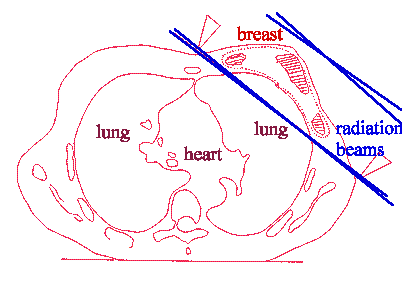|
|
redness of the breast and skin near completion of a course of radiation |
Generally the side effects of breast radiation do not become noticeable until the woman has received about 10 treatments, and then become somewhat more noticeable through the rest of the treatment. The most common side effects:
- skin irritation - the skin that is radiated gets red, itchy and may blister (like a sun burn)
- breast or chest wall tenderness or mild pain
- tiredness or fatigue (some women feel a little light-headed)
- are swelling or edema (usually slight, see section below about avoiding lymphedema)
the best treatment for the skin is to use moisturizing creams like Sween, Biofine, or Aloe. For itching the cortisone creams often work well, for burns switch to Silvadene unless there is an allergy to Sulfa.
The side effects generally fade away starting about 5 to 10 days after the treatments have finished. The skin discoloration may take several months to disappear and some women still have breast swelling that can last as long as a year.

